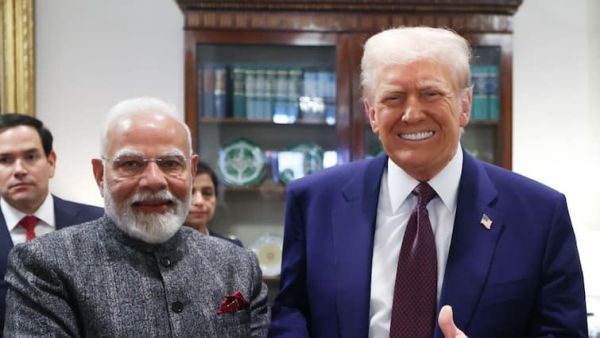
As the Indian commerce ministry delegation continues trade negotiations in Washington, US President Donald Trump has signalled that a bilateral trade deal with India could be finalised soon — possibly on the lines of the recent US-Indonesia pact. While Trump sounded optimistic, Indian trade experts have cautioned against a hasty or uneven agreement that may harm domestic sectors.
Speaking to reporters on Wednesday, Trump suggested that negotiations with India were progressing well. “We have another one (deal) coming up, maybe with India… We’re very close to a deal with India where they open it up,” he said, as quoted by news agency ANI.
#WATCH | Washington DC | US President Donald Trump says, "...We have another one (deal) coming up, maybe with India... We're very close to a deal with India where they open it up..."
— ANI (@ANI) July 16, 2025
"... We've brought in over $100 billion. The tariffs haven't kicked in that much, other than… pic.twitter.com/JD2FPiYcFM
Referring to the broader strategy of using tariffs to secure favourable trade agreements, Trump said, “We’ve brought in over $100 billion. The tariffs haven’t kicked in that much, other than automobiles and Steel… August 1st is when a very substantial money comes into our country. We’ve made deals with a lot of places… The best deal we can make is to send out a letter, and the letter says that you’ll pay 30%, 35%, 25%, 20%…”
According to news agency PTI, Trump on Tuesday drew parallels between the expected India deal and the US-Indonesia trade agreement concluded recently, where Indonesia agreed to full market access for American products. As per the pact, Indonesia will also buy USD 15 billion worth of US energy, USD 4.5 billion in agricultural goods, and 50 Boeing aircraft, while its own exports will face a 19% duty in the US.
GTRI Flags Concerns Over “One-Sided” Outcomes
Amid the growing anticipation over a possible agreement, Indian economic think tank GTRI (Global Trade Research Initiative) has urged caution. According to GTRI Founder Ajay Srivastava, any agreement that excessively exposes India’s sensitive sectors—particularly agriculture and dairy—to duty-free US imports without adequate returns could be “worse than no deal at all.”
Srivastava advised that “India must therefore negotiate transparently, guard against one-sided outcomes, and not succumb to pressure for quick, symbolic agreements that compromise long-term economic interests.”
India has historically refrained from offering duty concessions on dairy in any of its free trade agreements. Sources indicate that New Delhi is resisting US demands for such concessions in the ongoing talks.
Negotiations Continue Amid Tariff Freeze
The current round of negotiations—now in its fifth stage—is critical, as both sides attempt to address key areas such as agriculture, automobiles, and industrial goods. India has demanded relief from additional US tariffs on steel and aluminium (currently 50%), autos (25%), and a 26% additional tariff.
Meanwhile, Washington has postponed imposing further tariffs on several countries, including India, until August 1, offering a window for possible breakthrough discussions. Trump had earlier announced steep tariffs on April 2, but enforcement was delayed twice, first to July 9 and then to August 1.
The US is reportedly seeking greater access for goods such as automobiles (including electric vehicles), petrochemical products, wines, dairy items, apples, tree nuts, and genetically modified crops. India, on the other hand, is pressing for duty concessions on labour-intensive sectors like garments, textiles, gems and jewellery, plastics, leather goods, chemicals, shrimp, oilseeds, grapes, and bananas.
Interim Pact Expected Before Full BTA
Both countries are working towards concluding negotiations for an interim trade agreement ahead of a full bilateral trade agreement (BTA), targeted for finalisation by the autumn (September–October) this year.
According to trade data, India’s merchandise exports to the United States rose by 21.78% to USD 17.25 billion in April-May of the current fiscal, while imports from the US grew by 25.8% to USD 8.87 billion.
-
Mahesh Babu not to opt for body doubles while performing stunts in SSMB29

-
43 Years Of Waiting: Just 4 Bowlers Have Achieved This In Manchester

-
How To Prevent And Manage Dry Eyes, Styes, And Conjunctivitis

-
Rupee Inches Up By 12 Paise To 85.80 Against Dollar In Early Trade

-
Scale AI Cuts Hundreds Of Jobs Weeks After Meta’s $14 Billion Bet—Here's What We Know So Far
